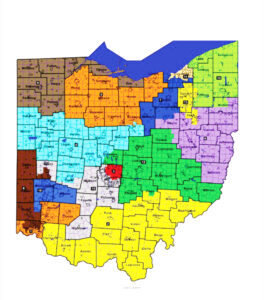Forgotten Warren businesses powered automobile industry
While Detroit is known as the “Motor City,” Warren can proudly boast that it was one of the cradles of the American automobile industry.
The National Packard Museum celebrates this rich automotive legacy established by William Doud and James Ward Packard in 1899. Their impact on automobile and automotive parts production in Warren and Trumbull County remains strong nearly 125 years later. Here is a look at two largely forgotten companies that once produced car bodies here in Warren and their links to the Packard legacy.
While the Packard brothers were designing their first automobile in 1899, they did not have to look far to find a suitable fabricator for the body of their “horseless carriage.” The Morgan & Williams Carriage Manufacturing Company, which built the first Packard car bodies, produced a full line of buggies, carriages, wagons, drays, farm wagons, surreys and sleighs.
The company’s reputation for quality and craftsmanship met the Packard brothers’ very high standards. Owned and operated by Owen Morgan and his brother-in-law, Billy Williams, since 1895, the firm’s roots stretched all the way back to the 1850s, when it was founded by the Packard brothers’ uncle, Eli K. Wisell.
As automobiles replaced horses and buggies in the early 1900s, Morgan & Williams successfully transitioned into the car business. By 1910, Morgan & Williams became a distributor of Maxwell, Oakland, Overland, Oldsmobile and Columbia automobiles and by 1916, the firm was completely out of the carriage trade.
As Morgan & Williams had demonstrated in 1899, the skills and workmanship required to craft horse-drawn carriages could be adapted to build automobile bodies. An experienced workforce was likely one of the factors that led Frank W. Philips of Cleveland to select Warren in 1923 as the location for his Philips Custom Body Company manufacturing facility.
Philips was a former carriage maker himself and had served as the vice president of the J.B. Judkins Co. of Merrimac, Massachusetts, a well-respected manufacturer of limousine and automobile bodies that operated from 1897 until 1938.
Philips purchased the GE Trumbull Mazda Lamp factory located at the corner of West Market Street and Austin Avenue and remodeled the facility to build high quality car bodies. N.A. Wolcott, chief executive of the Packard Electric Company, was one of Philip’s major investors, and W.D. Packard’s former executive assistant, Samuel Siddall, served as the firm’s treasurer.
Philips specialized in convertible coupes, a style that was very popular in the mid 1920s. Philips supplied bodies for several car companies, including Studebaker, Franklin, Stutz and Willys-Knight, but its largest customer was the Sterling-Knight Automobile Company, a Cleveland manufacturer that relocated to Warren in 1923. Philips crafted the bodies for all of the approximately 600 Sterling-Knights cars produced from 1923 to 1926, including an extremely rare, 1925 five-passenger sedan on exhibit at the National Packard Museum.
In 1925 and 1926, Philips crafted custom bodies for Detroit’s Packard Motor Car Co., and that company’s founder, James Ward Packard, was the proud owner of one. Bess Packard was so impressed by her husband’s 1926 convertible coupe that she declared the sporty Philips bodied auto the “perfect car.”
Frank W. Philips became ill in 1928 and sold his business to Briggs Manufacturing Company, which was Detroit’s largest independent body producer. Briggs had recently acquired the prestigious custom-coach builder LeBaron and wanted Phillips’ talented engineers and woodworkers to staff the new LeBaron-Detroit body plant. Briggs halted production at Philips’ Warren plant in 1929 and used the idle facilities for storage until selling the building back to General Electric in the 1930s.

